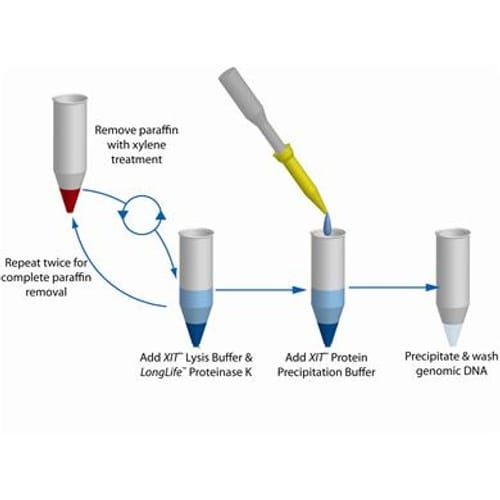DNA extraction refers to the technique(s) used in isolating DNA from a biological sample (cell membranes and other cellular components, tissues, proteins, bacteria, fungus, viruses) by disrupting the cell wall/cell membrane and nuclear envelope through physical, chemical, or enzymatic methods. DNA can be extracted from various sources, including the blood and body fluids, hair, buccal swab, frozen tissue sections, formalin-fixed paraffin-embedded tissues, and direct Fine needle aspiration cytology (FNAC). There are a wide variety of kits and methods commercially available for isolation of DNA.
DNA Extraction: How Does It Work?
While different DNA extraction methods use different chemical combinations depending on the type of cells used, the process remains essentially the same. Basically, here’s how it goes.
Step 1. Cell lysis. To effectively release the DNA of interest into the lysate, the sample is subjected to physical disruption methods (freezing and grinding, sonication, vertexing, bead beating) and added to a salt solution to protect the negatively charged phosphate groups in the DNA backbone. A non-ionic detergent such as sodium dodecyl sulfate (SDS) may also be added to break down the lipids in the cell membrane and nucleus.
Step 2. Removal of cellular debris. If you want to get accurate results from your downstream application, start by using a sample that is free from unwanted materials such as DNA-associated proteins, cellular proteins, and other cellular debris. This is usually accomplished through filtration, centrifugation, bead-based methods, or by adding the appropriate protease to the sample solution. Each of these methods has its own pros and cons so choose the most appropriate method to suit your application.
Step 3. Precipitating the DNA. After the removal of unnecessary debris, the DNA is precipitated by carefully adding ice-cold ethanol or isopropyl alcohol and centrifuging the sample solution. Since the presence of alcohol and salt renders the DNA insoluble, adding monovalent cations such as ammonium or sodium acetate to the DNA solution encourages efficient nucleic acid precipitation while allowing the proteins (which remain in the organic phase) to be carefully drawn off from the solution.
Step 4. Purification. The recovered DNA pellet is washed with cold alcohol and centrifuged to remove all contaminants (e.g., proteins, salts). It is then re-suspended in a slightly alkaline elution buffer such as Tris, TE, or double-distilled water. At this stage, the DNA sample is ready to use.
In choosing elution buffer solutions, pick one that satisfies the requirements of your downstream application. For example, storing the DNA in TE buffer is advisable only if EDTA doesn’t negatively affect the results of your experiment. Keep in mind that EDTA effectively binds metal ions (specifically magnesium) present in purified DNA and using it may inhibit or deactivate DNAse or RNAse activity.
Step 5. Confirming the presence of DNA. The presence and quality of the DNA sample can be confirmed through DNA electrophoresis on an agarose gel and checking it under UV light, while the concentration is usually established by taking optical density readings with a spectrophotometer.
As mentioned earlier, the type of cell determines the most suitable DNA extraction method to be used. For example, cells with soft cell walls (e.g., bacteria) can be lysed by simply heating the sample solution, while cells with harder cell walls (e.g., plant cells, algae, fungus) require a combination of physical (or mechanical), chemical, and enzymatic methods. On the other hand, animal cells are best lysed using the phenol-chloroform method.
Aside from this method, DNA can also be isolated through ion-exchange technology, cesium chloride density gradients, magnetic separation, silica-based technology, and salting out.
Applications
DNA extraction plays a crucial role in biotechnology since it is usually used as a starting point for numerous downstream applications and diagnostic processes which may include the following:
- Newborn screening
- Medical diagnosis
- Identity verification including paternity testing and ancestry tracking
- Genetic engineering
- Drug research and discovery
- Forensic evidence analysis




